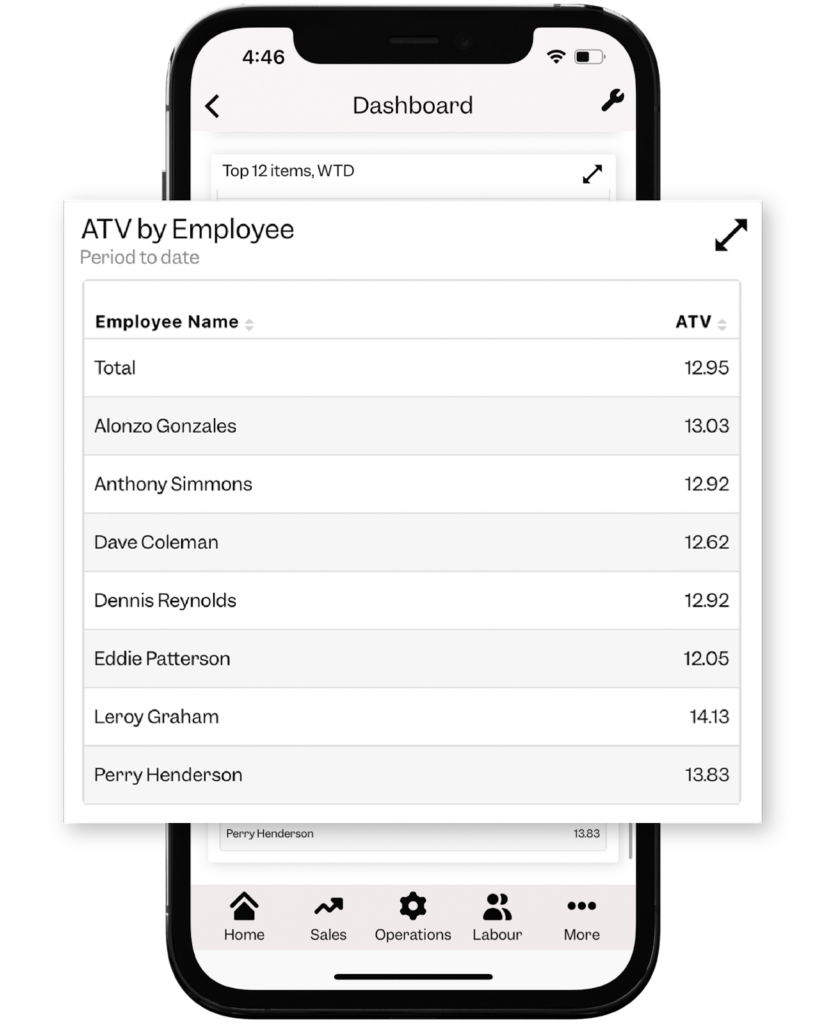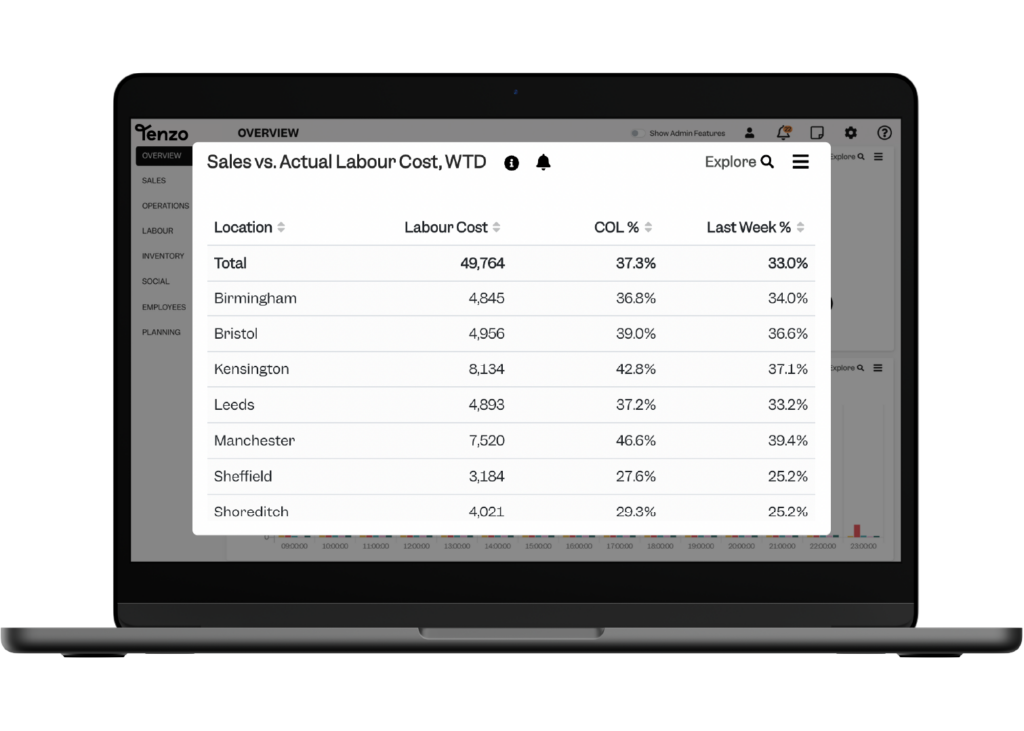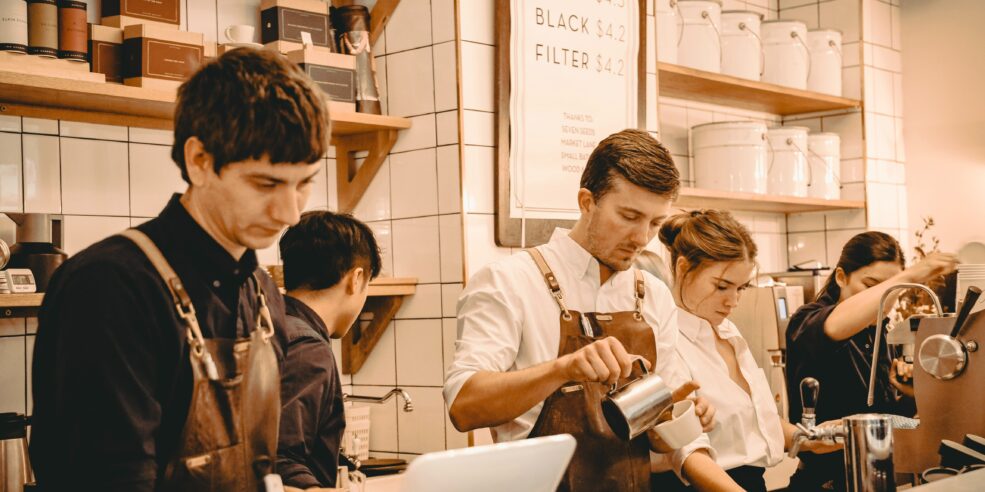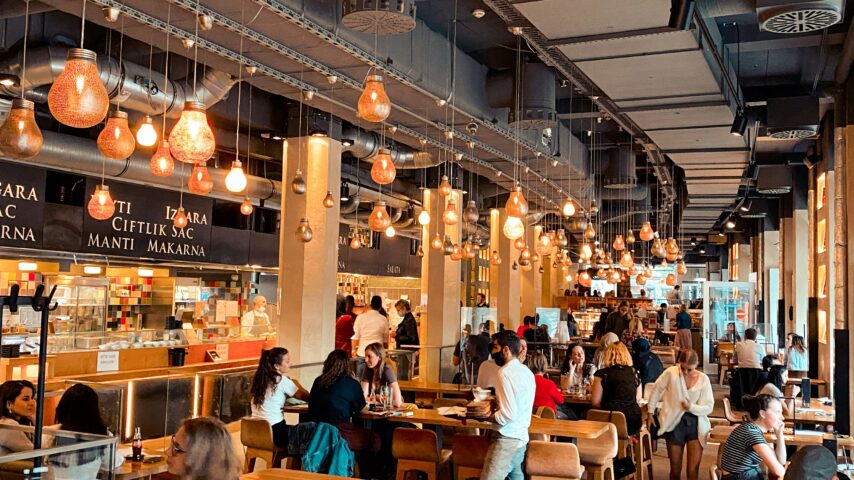Cost of Labour (COL) in restaurants is an important metric to be monitored at all times. It can be a huge part of overall costs with most restaurants averaging at about 35% labour cost as a percentage of sales.
Following the pandemic, and the rising cost of living, high staff turnover has become a universal challenge for restaurants and the hospitality industry. Nearly 4 out of 5 restaurants are understaffed leading to a reduced capacity for sales, whilst increasing the risk of staff burnout due to them feeling overwhelmed. Hiring staff can also be expensive, so ensuring you have loyal, happy employees is vital in controlling costs by improving labour retention.
Labour productivity is another factor that should be taken into consideration when analysing labour costs; it’s how much revenue is taken in per labour hour spent. Encouraging employees to improve their productivity is a great way to control labour costs and create a more cost-effective business.
My customers that manage labour most efficiently have very strict labour budgets that flex with revenue. They create a culture that values sticking to labour budgets, as a way of maintaining consistent revenue within the business. – Maddie Pellico, Customer Success Team Lead at Tenzo
Improving performance with labour productivity and retention
Increased Staff Retention
High employee turnover is costing the hospitality industry £275 million a year, as each new hire can cost 1.5 to 2 times the amount of the existing employee’s salary, Not only does employee turnover cost money, but it’ll also lessen morale within the team and likely encourage more staff to leave.

Champion your Team
Set goals and targets for your staff, and business, based on metrics and quantifiable values; these could be set for either general business sales or specific staff members’ performance.
Creating targets gives employees something to work towards, and an understanding of the level they should be performing at. Targets provide an opportunity for you to champion your employees, and really make them feel proud of the work that they’re doing.
78% of employees feel more engaged when they feel strong recognition from their employers decreasing the likelihood of staff turnover. But it’s important not to meet underperforming staff with any resentment and ensure they are given the support and feedback they need to aid their development.
Push for a great company culture
Employee satisfaction increases to 87% when they feel that they have a thriving workplace culture, so ensuring that your business does everything to create a happy working environment is important.
Company events that aren’t focused on work are a great way to improve employees’ relationships and create a positive working environment. Team building events such as bowling or after-work drinks can also help improve internal communications whilst outside of the workplace.
59% of people in hospitality experience mental health issues making it imperative that employees feel supported by their team members, and have good relationships with colleagues that they can rely on. Creating buddy schemes, or having a dedicated team member to check in is a useful way to ensure everyone is feeling heard.
Attracting top staff
There are currently many more open jobs in the hospitality industry than employees to fill them. Junior and senior positions alike are tricky to find the perfect candidate for. If you’re not able to fill all the available vacancies, then filling as many as possible with experienced candidates will put you above the rest.
Employer branding
Employer branding is vital in attracting both experienced and junior staff; it’s an outward message from the company about who they are and what makes them special. It not only helps to attract new potential prospects but also prospects that are likely to resonate with your company and its values.
Offering good company benefits and competitive salaries is one way to ensure that your company stands out above other restaurants. Benefits could include private healthcare, training budgets, and good holiday allowances.
Demonstrating company culture is another good way to be successful in employer branding. It shows that relationships within your company are fulfilling’ and that time and resources are spent ensuring your employees are happy and developing.
Progression Opportunities
Clear progression opportunities not only attract staff that are looking to succeed in their careers, but it also promotes productivity and encourages employee retention. Employees with long-term business knowledge are valuable and save money in hiring.
Providing professional development with clear progression paths also encourages hospitality to be seen as a long-term career, and not a stopover between jobs. Without the stability of a future, and growth within the industry many will leave in search of a ‘career’.
Improving labour productivity
Labour productivity is one of the most important metrics to monitor when it comes to restaurant performance. Managing sales by labour hour means controlling costs by optimising your labour spend; this can be based on either improving employees’ productivity or the restaurant as a whole through effective deployment.

Effective deployment of staff
Staffing according to demand is really important so that staff neither feel overwhelmed nor bored, but that there are also enough people to deal with busy periods. Demand forecasting allows you to prepare for the number of covers during each service so that you can deploy staff appropriately and boost restaurant performance.
Shift patterns within restaurants can be rigid with everyone’s shifts ending or starting at the same time, this either leads to staff feeling unsure of the current restaurant’s customer needs or having both teams having to overlap for a long period. Implement a staggered handover time where one person from each team overlaps shifts with everyone else – leaving the restaurant running smoothly with high customer and employee satisfaction.
Trends and technology
Introducing technology within your business reduces the requirements for employees to do time-sapping administrative tasks; your team is more likely to enjoy their work if they feel it’s of value to the business.
Data collation is another task that has previously been a huge part of the general manager’s role. For example, Nona’s GMs used to spend 2 hours every week collating and understanding data, that time is now freed up to implement the changes that increase performance.
Using your own restaurants’ data to improve team productivity can be useful. Trends can help to identify which of your team are the highest performing. These team members can be an asset in training up the rest of the team: allow underperforming team members to shadow them so restaurant sales continue to improve.
Training
Staff training programmes are a great way to enhance labour productivity, helping to increase sales and profitability, while also helping staff gain more skills for their careers. Low training was cited as the main reason for leaving by 34% of staff.
Another benefit of good training schemes is that you’re able to employ less experienced staff, with the knowledge that they should be up to your restaurant’s standards very quickly. Saving the business more money, and expanding the potential talent pool.
Conclusion
High staff turnover is a prevalent issue within the hospitality industry at the moment with everyone feeling a pinch in applicants and the necessary resources to pull in the few there are. Working on improving your restaurant retention rate is a great way to avoid this problem, and save money on the hiring process.
Take advantage of the resources available to you to manage your staff efficiently, ensure that they don’t feel overwhelmed and help them improve their productivity so that your restaurant sees the benefits of improved performance.
To get more tips on how to book your restaurant’s performance, make sure to download our Ultimate Restaurant Performance Guide!





